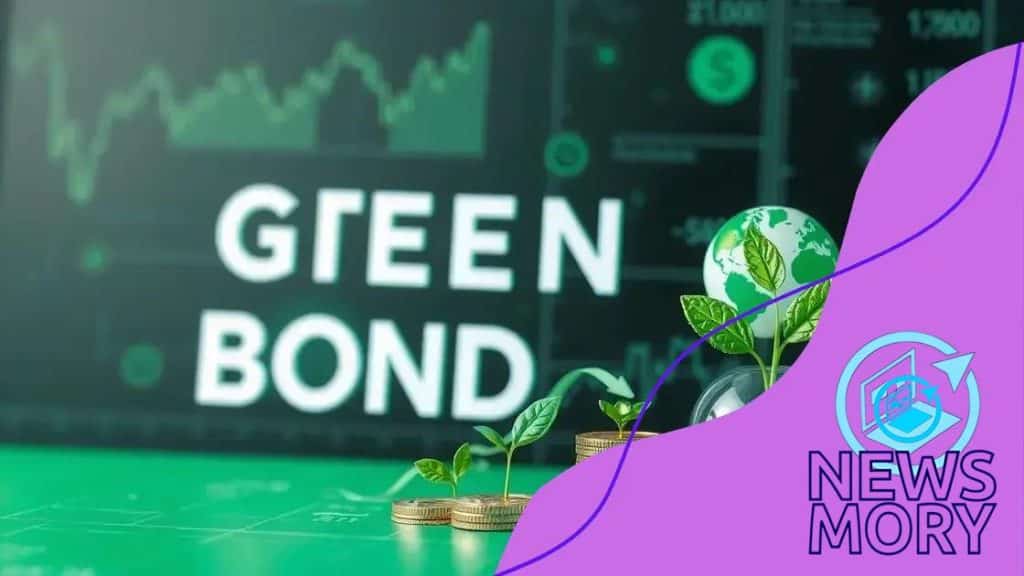The rise of green bonds and their role in investment portfolios

Anúncios
The rise of green bonds and their role in investment portfolios highlights a rapidly growing market where investors can achieve financial returns while supporting environmentally sustainable projects.
The rise of green bonds and their role in investment portfolios is becoming a key conversation in sustainable finance. Have you noticed how new investment opportunities can transform not just returns but also the planet? Let’s dive into this impactful trend.
Anúncios
Understanding green bonds
Understanding green bonds is essential for investors looking to make a positive impact while achieving financial returns. These bonds are specifically issued to fund projects that have positive environmental benefits, such as renewable energy or energy efficiency improvements.
The growing interest in green bonds reflects a shift in how we view investment. Investors are increasingly aware of their choices’ environmental and social implications, aiming not just for profit but also for sustainability.
What are green bonds?
Green bonds are a type of fixed-income instrument. They work like traditional bonds, but the proceeds are allocated to projects that are beneficial for the environment. Some common projects funded by green bonds include:
Anúncios
- Wind and solar energy installations
- Energy-efficient building constructions
- Pollution reduction initiatives
- Transportation systems that lower carbon emissions
The purpose of these bonds is to finance projects that contribute to a cleaner economy and help combat climate change. Their appeal lies not only in their green credentials but also in the financial returns that they can offer.
How do green bonds impact investments?
Including green bonds in an investment portfolio can enhance its sustainability profile. Investors are often willing to accept slightly lower returns in exchange for funding environmentally responsible projects.
Additionally, as demand for sustainable investment options grows, the market for green bonds is expanding. This means that more project opportunities are emerging, which can lead to a greater variety of options for investors.
Overall, investing in green bonds offers a chance to support the transition to a sustainable future while still pursuing financial gains. The decision to invest can reflect personal values and contribute to significant environmental progress.
The benefits of adding green bonds to portfolios
Adding green bonds to investment portfolios offers several benefits that align financial goals with environmentally friendly practices. Investors today increasingly value sustainability, and green bonds present a viable way to achieve financial returns while supporting eco-friendly projects.
These bonds can complement traditional assets, providing greater diversity to a portfolio. As the demand for sustainable investments grows, green bonds can become more attractive to a wider range of investors.
Financial benefits
One of the most compelling reasons to invest in green bonds is the potential for solid financial performance. Many green bonds come with competitive interest rates and appeal to socially conscious investors. Some key financial benefits include:
- Diversification of investment opportunities
- Increased demand leading to potential price appreciation
- Attractive risk-adjusted returns
- Possibility of tax incentives in certain regions
Green bonds may also perform well during economic downturns, as they often focus on essential services and infrastructure improvements that remain in demand.
Environmental impact
Investing in green bonds allows investors to contribute to significant environmental benefits. These projects can address climate change directly by financing renewable energy sources and improving energy efficiency.
By allocating funds to these initiatives, investors play a role in promoting sustainable practices that can lead to positive societal changes. This aligns financial strategies with personal values, increasing overall satisfaction with investment choices.
In the long term, the impact of investing in green bonds can extend beyond financial returns, fostering a healthier planet for future generations. Investors can feel empowered knowing they are contributing to a more sustainable economy.
Market trends driving green bond investments

Understanding the market trends driving green bond investments is crucial for investors looking to align their portfolios with sustainable practices. As awareness of climate change increases, many investors are turning to green bonds to support environmentally friendly projects while seeking returns.
One significant trend is the rise in regulation and government support for sustainable financing. Governments worldwide have started implementing policies that encourage investment in renewable energy and sustainability. These can include tax incentives, subsidies, and other measures that make green bonds more attractive.
Growing investor demand
There is an increasing demand from institutional investors for sustainable investment options. Funds are now actively seeking out green bonds, which are perceived to be safer and more resilient investments in a changing climate.
- Insurance companies and pension funds are investing heavily in green projects.
- Environmental, social, and governance (ESG) criteria are now standard for many investment strategies.
- Retail investors are also showing interest in sustainable options.
This shift in demand highlights a broader change in investment philosophy, where performing well financially is now expected to coincide with doing good for the planet.
Technological advancements
Technological advancements play a crucial role in driving green bond investments. Innovations in renewable energy technologies have reduced costs and increased efficiency, making such projects more viable.
As projects become more financially sound, investments in green bonds become more attractive. Additionally, the growth of digital platforms for issuing and trading green bonds makes it easier for investors to access these opportunities.
Market trends indicate that as awareness and technological capabilities develop further, the appeal of green bonds will continue to grow, attracting a diverse range of investors committed to positively impacting the environment.
Challenges of investing in green bonds
Investing in green bonds comes with its own set of challenges that potential investors should consider. While these bonds offer significant benefits, understanding the hurdles can aid in making informed decisions.
One major challenge is the lack of standardization in the green bond market. Different issuers may have varying definitions of what qualifies as a “green” project. This can create confusion and make it difficult for investors to assess the true impact of their investments.
Market liquidity
Another concern is market liquidity. Compared to traditional bonds, green bonds may have lower trading volumes, which can make buying and selling more challenging. Investors should be prepared for the possibility of not finding a market for their bonds when they wish to sell.
- Lower trading volumes can lead to wider bid-ask spreads.
- Some green bonds may be locked in for longer periods.
- Investors might face challenges in exiting their positions.
Additionally, the evolving regulatory landscape can pose risks. As governments create new regulations, existing investments may be affected. This can lead to changes in the market values of bonds, introducing additional uncertainty for investors.
Due diligence
Conducting adequate due diligence is another key challenge. Investors need to thoroughly analyze the projects behind green bonds to ensure they meet their criteria for sustainability and performance. Without proper evaluation, investors may unintentionally fund projects that do not deliver the expected environmental benefits.
Furthermore, the ratings and assessments of green bonds can vary significantly. Relying solely on ratings can be misleading, as not all rating agencies may evaluate the same aspects of a bond or project.
In summary, while green bonds present a unique opportunity for sustainable investing, addressing these challenges is vital for guiding investors toward making informed choices.
Future outlook for green bonds and investors
The future outlook for green bonds is promising, as more investors seek to align their portfolios with sustainable practices. As environmental awareness grows, the demand for these financial instruments is expected to rise significantly.
Many experts believe that green bonds will play a crucial role in financing the transition to a low-carbon economy. This transition requires significant investments in renewable energy, sustainable agriculture, and environmentally friendly infrastructure projects.
Increased issuance
We can expect a surge in green bond issuance over the coming years. Governments and corporations are increasingly recognizing the potential of these instruments to fund initiatives that address climate change. As more organizations commit to sustainability, green bonds provide a way to finance their environmental goals.
- Many countries are working on establishing frameworks to support green bond markets.
- Corporations are setting ambitious sustainability targets, leading to more green bond offerings.
- Financial institutions are developing products that encourage green investing.
The growing regulatory landscape is another factor supporting the future of green bonds. Governments worldwide are starting to enforce stricter environmental regulations, prompting companies to seek green financing options to comply with these laws.
Investor diversification
Investors are also exploring ways to diversify their portfolios through green bonds. The increasing variety of issuers and projects means that investors can find opportunities that match their sustainability goals and risk tolerance.
Furthermore, as public interest in environmental, social, and governance (ESG) investing increases, more capital will flow into green bonds. This trend is likely to lead to a more mature and stable market, attracting both institutional and retail investors.
Overall, the future of green bonds looks bright as they become a vital part of the global financing landscape and contribute to meaningful environmental changes.
FAQ – Frequently Asked Questions about Green Bonds
What are green bonds?
Green bonds are fixed-income financial instruments used to fund projects with positive environmental impacts, such as renewable energy and sustainable infrastructure.
How do green bonds benefit investors?
Investors in green bonds can support environmentally friendly projects while potentially earning competitive returns on their investments.
What challenges do investors face when investing in green bonds?
Some challenges include market liquidity, lack of standardization, and the need for thorough due diligence to assess the sustainability of projects.
What does the future hold for green bonds?
The future is promising, with expected increases in issuance, regulatory support, and growing investor demand for sustainable investment options.





